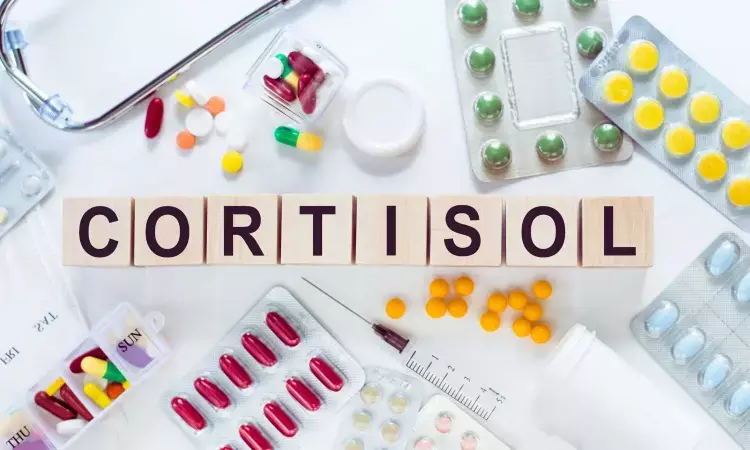- Home
- Medical news & Guidelines
- Anesthesiology
- Cardiology and CTVS
- Critical Care
- Dentistry
- Dermatology
- Diabetes and Endocrinology
- ENT
- Gastroenterology
- Medicine
- Nephrology
- Neurology
- Obstretics-Gynaecology
- Oncology
- Ophthalmology
- Orthopaedics
- Pediatrics-Neonatology
- Psychiatry
- Pulmonology
- Radiology
- Surgery
- Urology
- Laboratory Medicine
- Diet
- Nursing
- Paramedical
- Physiotherapy
- Health news
- Fact Check
- Bone Health Fact Check
- Brain Health Fact Check
- Cancer Related Fact Check
- Child Care Fact Check
- Dental and oral health fact check
- Diabetes and metabolic health fact check
- Diet and Nutrition Fact Check
- Eye and ENT Care Fact Check
- Fitness fact check
- Gut health fact check
- Heart health fact check
- Kidney health fact check
- Medical education fact check
- Men's health fact check
- Respiratory fact check
- Skin and hair care fact check
- Vaccine and Immunization fact check
- Women's health fact check
- AYUSH
- State News
- Andaman and Nicobar Islands
- Andhra Pradesh
- Arunachal Pradesh
- Assam
- Bihar
- Chandigarh
- Chattisgarh
- Dadra and Nagar Haveli
- Daman and Diu
- Delhi
- Goa
- Gujarat
- Haryana
- Himachal Pradesh
- Jammu & Kashmir
- Jharkhand
- Karnataka
- Kerala
- Ladakh
- Lakshadweep
- Madhya Pradesh
- Maharashtra
- Manipur
- Meghalaya
- Mizoram
- Nagaland
- Odisha
- Puducherry
- Punjab
- Rajasthan
- Sikkim
- Tamil Nadu
- Telangana
- Tripura
- Uttar Pradesh
- Uttrakhand
- West Bengal
- Medical Education
- Industry
Artificial biosensor can better measure the body's main stress hormone: Study

Cortisol is a crucial hormone that regulates many important bodily functions like blood pressure and metabolism, and imbalances of this stress hormone can lead to health problems.
Traditionally, cortisol levels must be measured in a doctor’s office or other clinical setting. But a new advance in the design of artificial biosensors paves the way for point-of-care testing and diagnoses with far greater accuracy than is currently available.
Andy Yeh, an assistant professor of biomolecular engineering at the University of California, Santa Cruz, has invented an artificial, luminescent sensor that binds with cortisol in the blood or urine and then emits light to indicate the levels of the stress hormone in the body. A new study in the Journal of the American Chemical Society demonstrates that this technique can detect cortisol across all levels relevant to human health.
Yeh demonstrated that this biosensor can be used in combination with the camera on a smartphone to enable people to measure cortisol levels at home or in a clinic, with high levels of sensitivity and without the costly instrumentation of the lab, greatly expanding access to accurate measurement of this important health indicator.
Designed from scratch
Yeh is an expert in artificial protein design, a technique that uses AI-guided computation to design proteins completely from scratch. This varies from traditional approaches, which modify proteins found in the natural world.
To create a new detection system for cortisol, Yeh designed a protein-based biosensor in which the stress hormone triggers two designed proteins to come close to each other at the molecular level. This process leads to light emission, with more light indicating more cortisol.
To Yeh's knowledge, this is the first example of a completely computationally designed biosensor that can perform with such high sensitivity and dynamic range for detecting a small molecule analyte. Using a camera to measure the amount and color of light emitted allows cortisol levels to be read with more sensitivity than current tests provide.
Point-of-care
This new diagnostic tool would be in a “mix and read” format-similar to the technique used in Covid-19 nasal swab rapid tests. The test requires just a drop of blood or urine, which is mixed with a solution that contains the biosensor. Then, a smartphone camera and app could translate the light emitted into a direct measurement of cortisol levels.
“You can read the signal directly-the output of the sensor is light emissions, so essentially you can just take a picture of the test with your smartphone,” Yeh said. “Ideally, that’s really field compatible.”
Dynamic results
The test’s high level of sensitivity is a vast improvement over traditional tests, which don’t usually offer enough quantitative results when outside of the cortisol normal range. Yeh’s solution covers a wider dynamic range, offering quantitative results for healthy, too-low, and elevated levels of cortisol.
“This sensor is very, very sensitive compared to the current standard methods used in the hospital,” Yeh said. “The dynamic range is huge compared to the traditional assay.”
Down the line, Yeh envisions that this technology may also be used in a drug-development or diagnostic setting to better understand and treat the health issues that arise from cortisol deficiencies or surpluses.
Reference:
Julie Yi-Hsuan ChenXue Peng, De Novo Design of High-Performance Cortisol Luminescent Biosensors, Journal of the American Chemical Society, DOI:10.1021/jacs.5c05004.
Dr Kamal Kant Kohli-MBBS, DTCD- a chest specialist with more than 30 years of practice and a flair for writing clinical articles, Dr Kamal Kant Kohli joined Medical Dialogues as a Chief Editor of Medical News. Besides writing articles, as an editor, he proofreads and verifies all the medical content published on Medical Dialogues including those coming from journals, studies,medical conferences,guidelines etc. Email: drkohli@medicaldialogues.in. Contact no. 011-43720751


